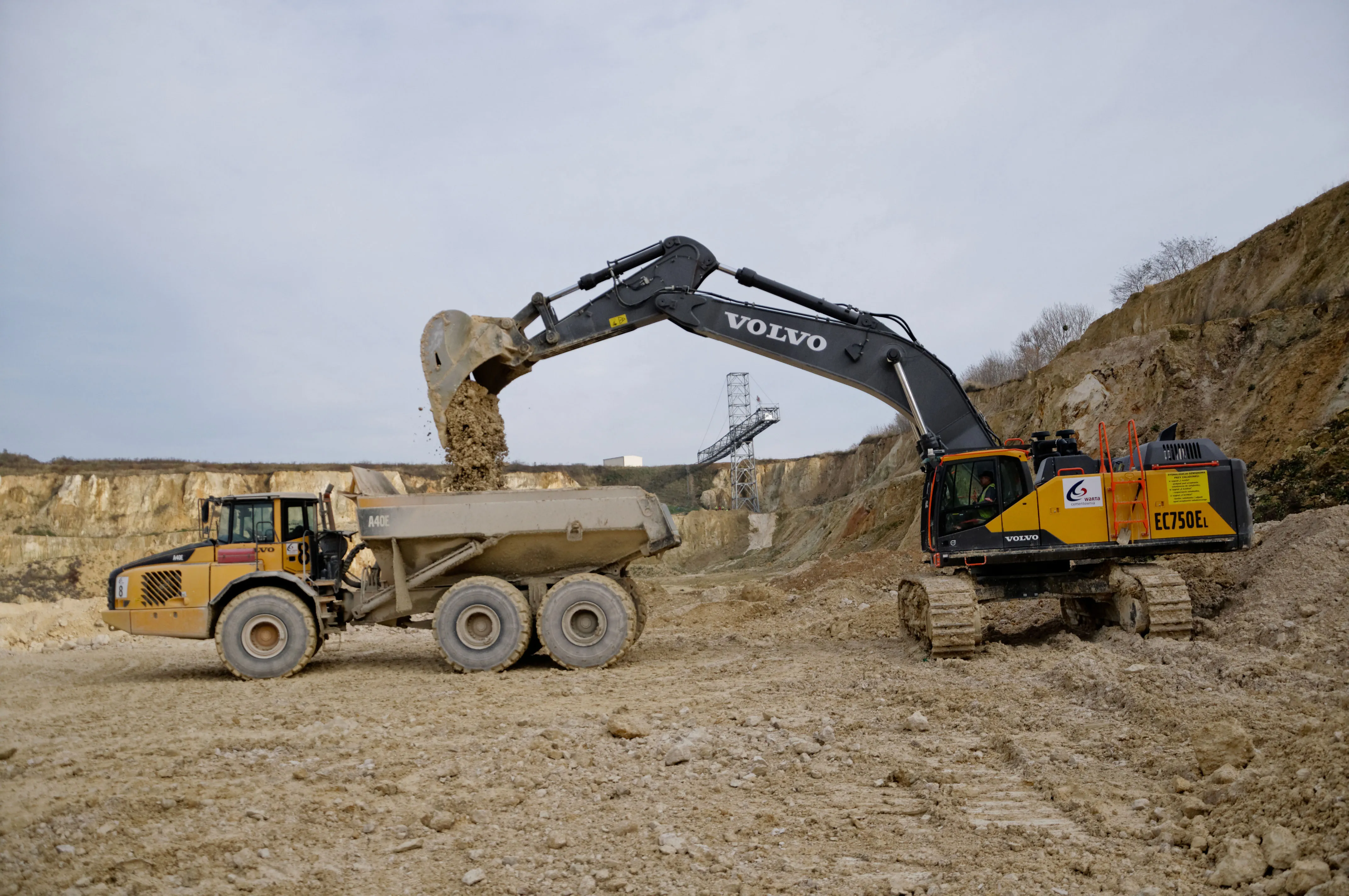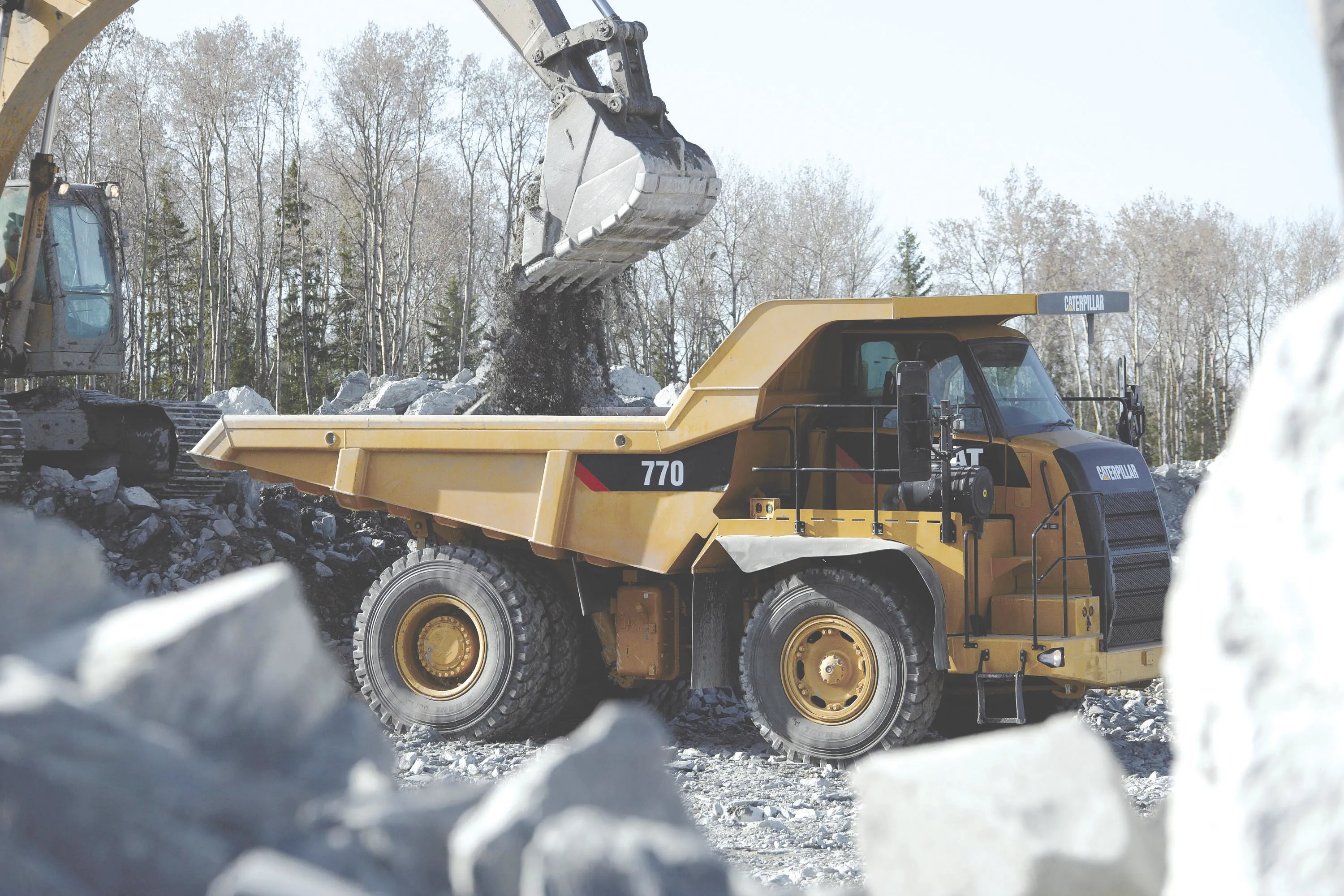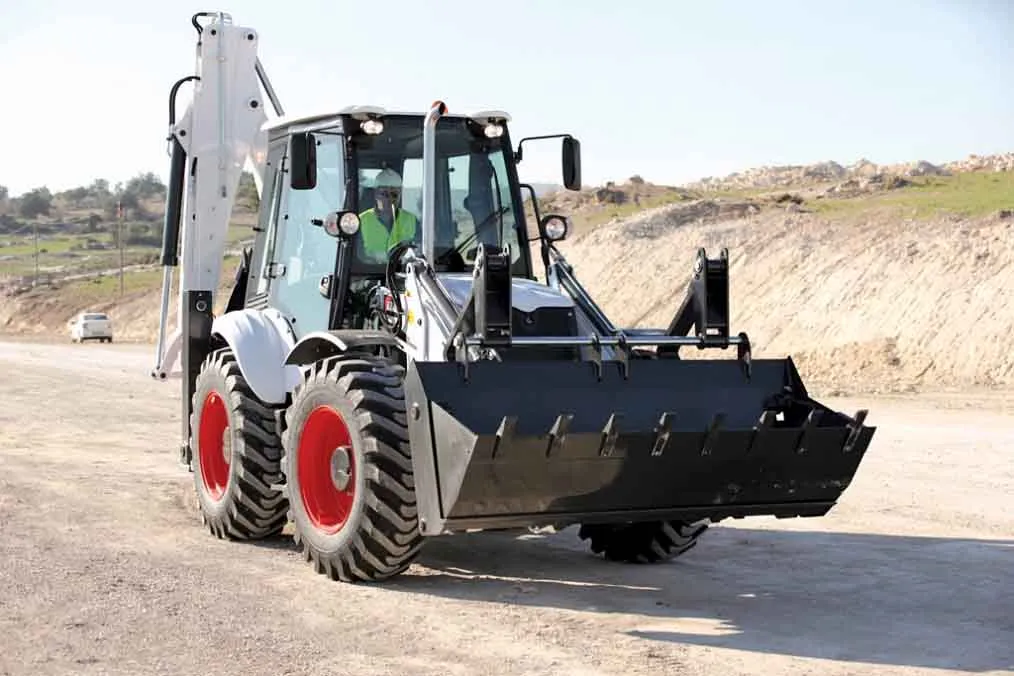
The EC750E crawler model is working at Cementownia Warta’s limestone operations, said Dariusz Gawlak, managing director of Warta and vice president of the Polish Cement Association. Gawlak expects more infrastructure projects coming on stream next year, signalling a general rise in demand for cement.
Quarry working is hard on machines and personnel, he said, especially during the winter months, when the mercury can drop to sub-zero temperatures. “Machine availability is the key issue,” says Gawlak. The key to mining limescale is the right equipment and
The company bought its first machine in 2008 – an L120F wheeled loader, which is still working in the quarries. Before the 75tonne crawler excavator had been unveiled at Germany’s bauma exhibition in Munich in April 2016, Warta had already put in an order.
Over the past nine years, Warta’s fleet has expanded to include 20 Volvo machines: four crawler excavators (EC700B, EC700C, EC290C and now the EC750E), five wheeled loaders (L350F, L220F, L120F and L120G) and 11 of Volvo’s 40tonne articulated haulers (models A40E and A40G).
The EC750E offers electro-hydraulic technology, optimised to operate in harmony with the robust engine, providing greater operator control and productivity. The model’s cab delivers a low-noise operator environment Warta was looking for. Ergonomically positioned interfaces – including the joysticks, keypad and LCD monitor – and clear all-around visibility.
“It’s also compatible with our Volvo A40E haulers,” he said. “When fitted with articulated hauler side extensions on the hauler body, it gives 15% more hauled material with the same fuel consumption.”









